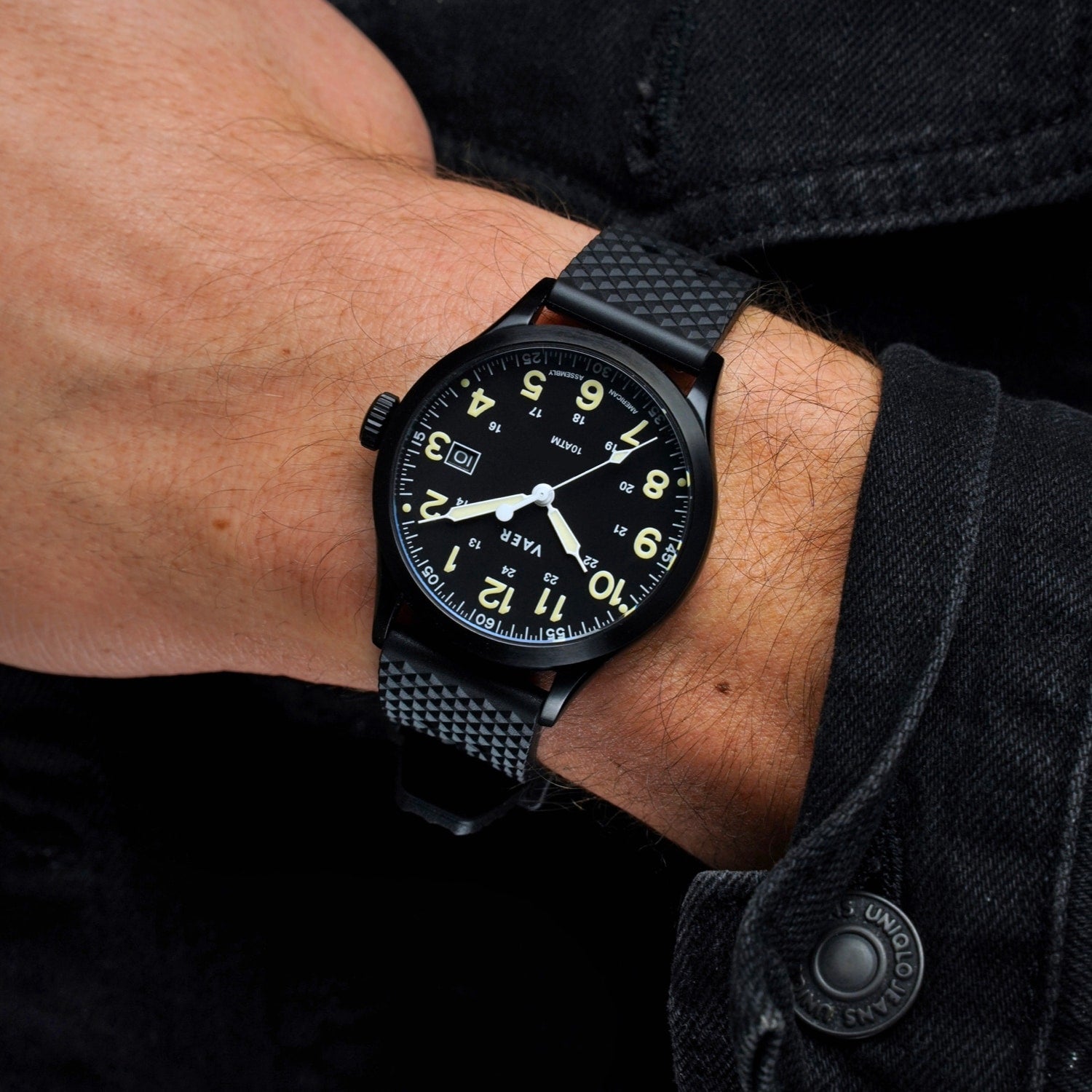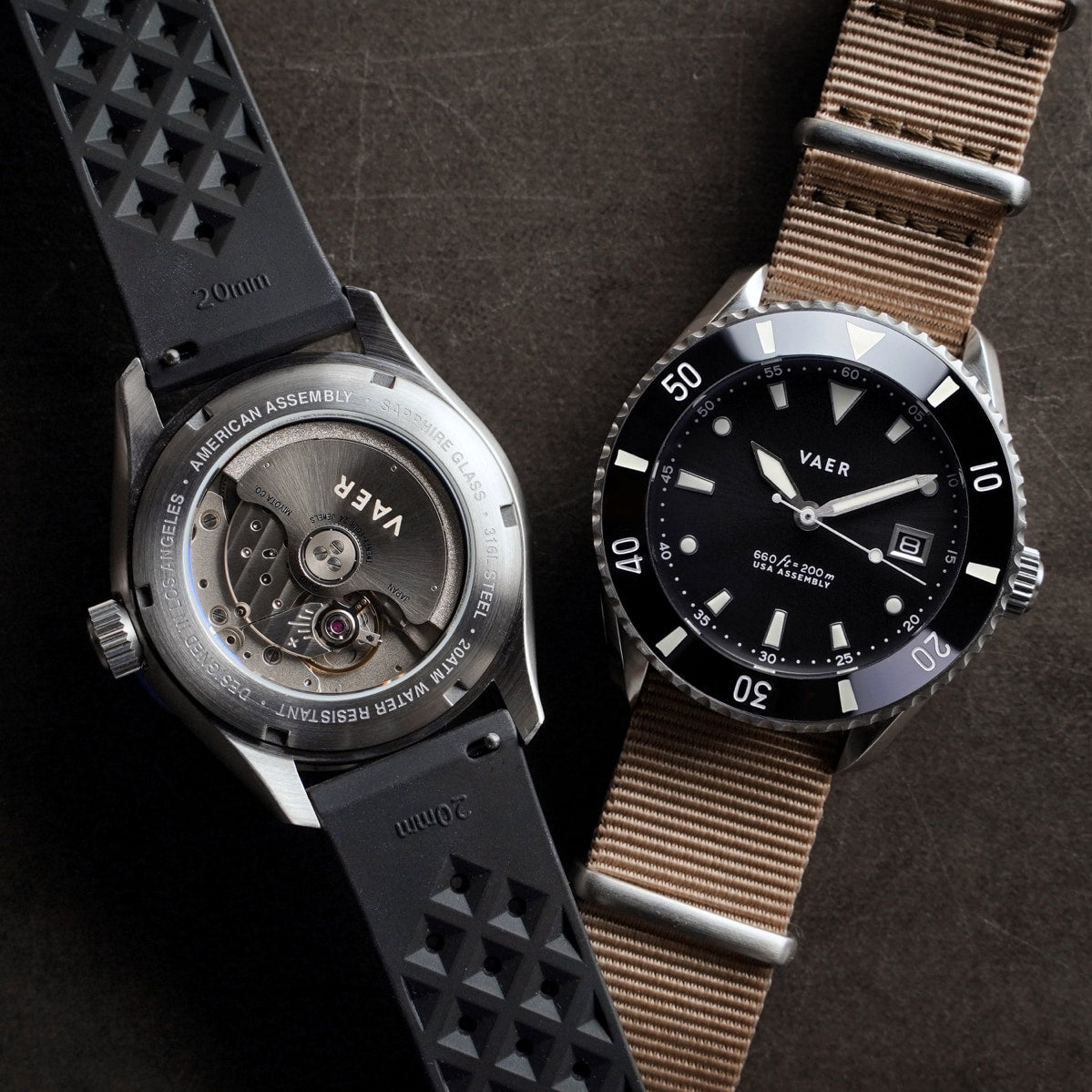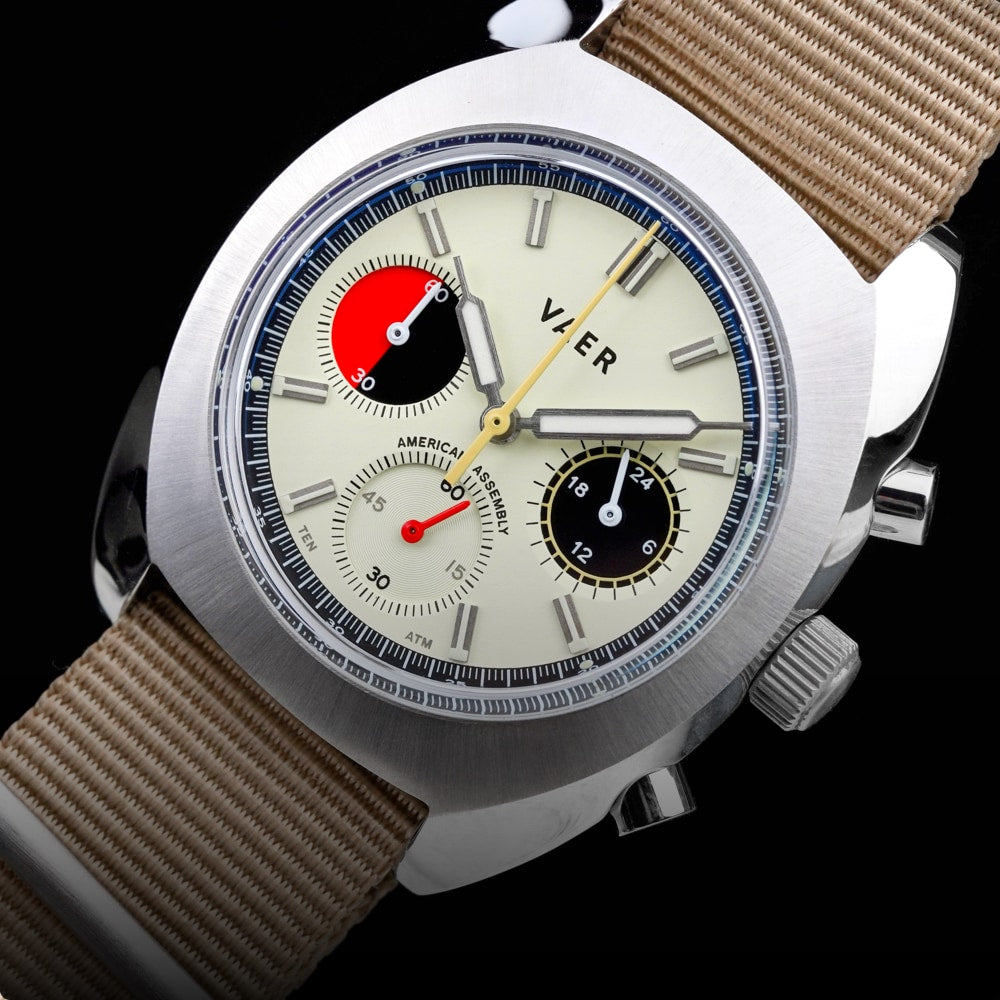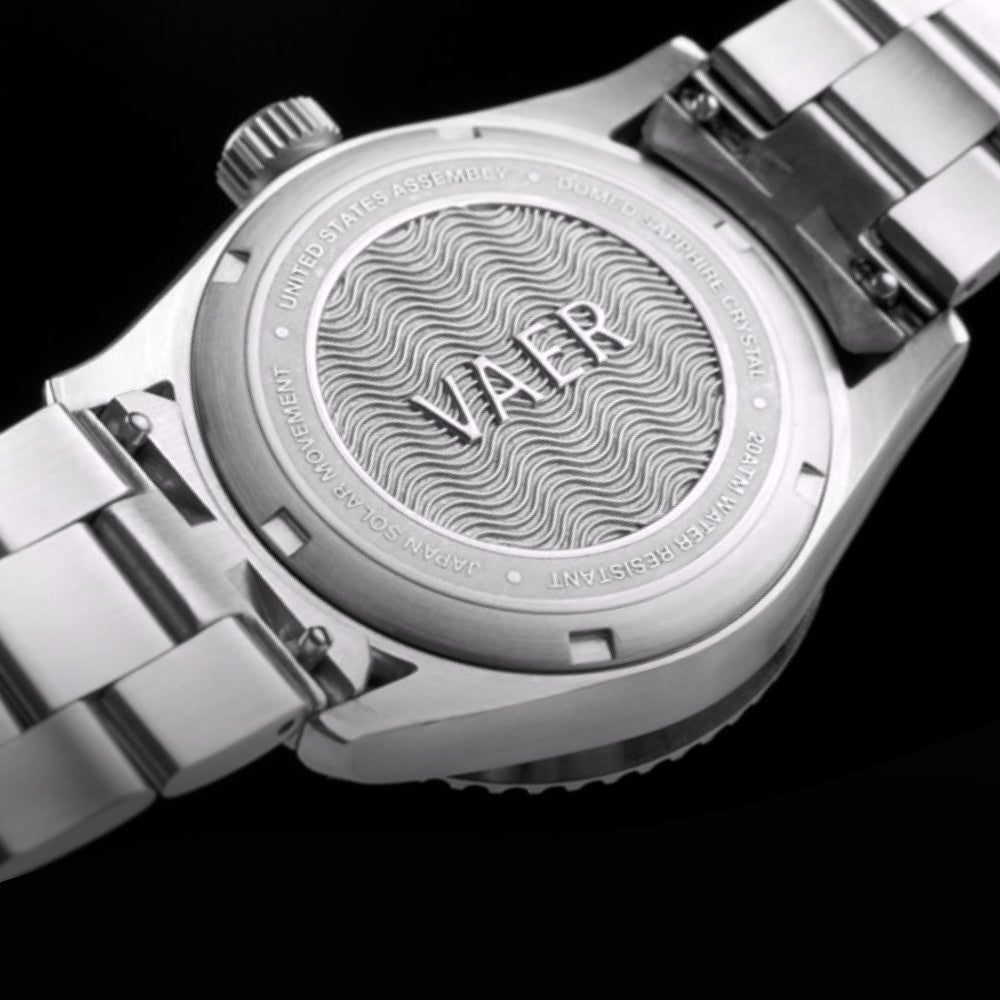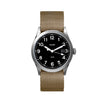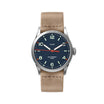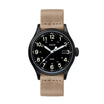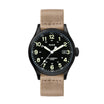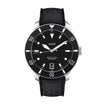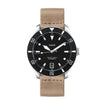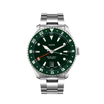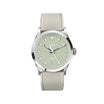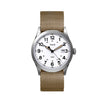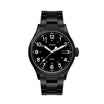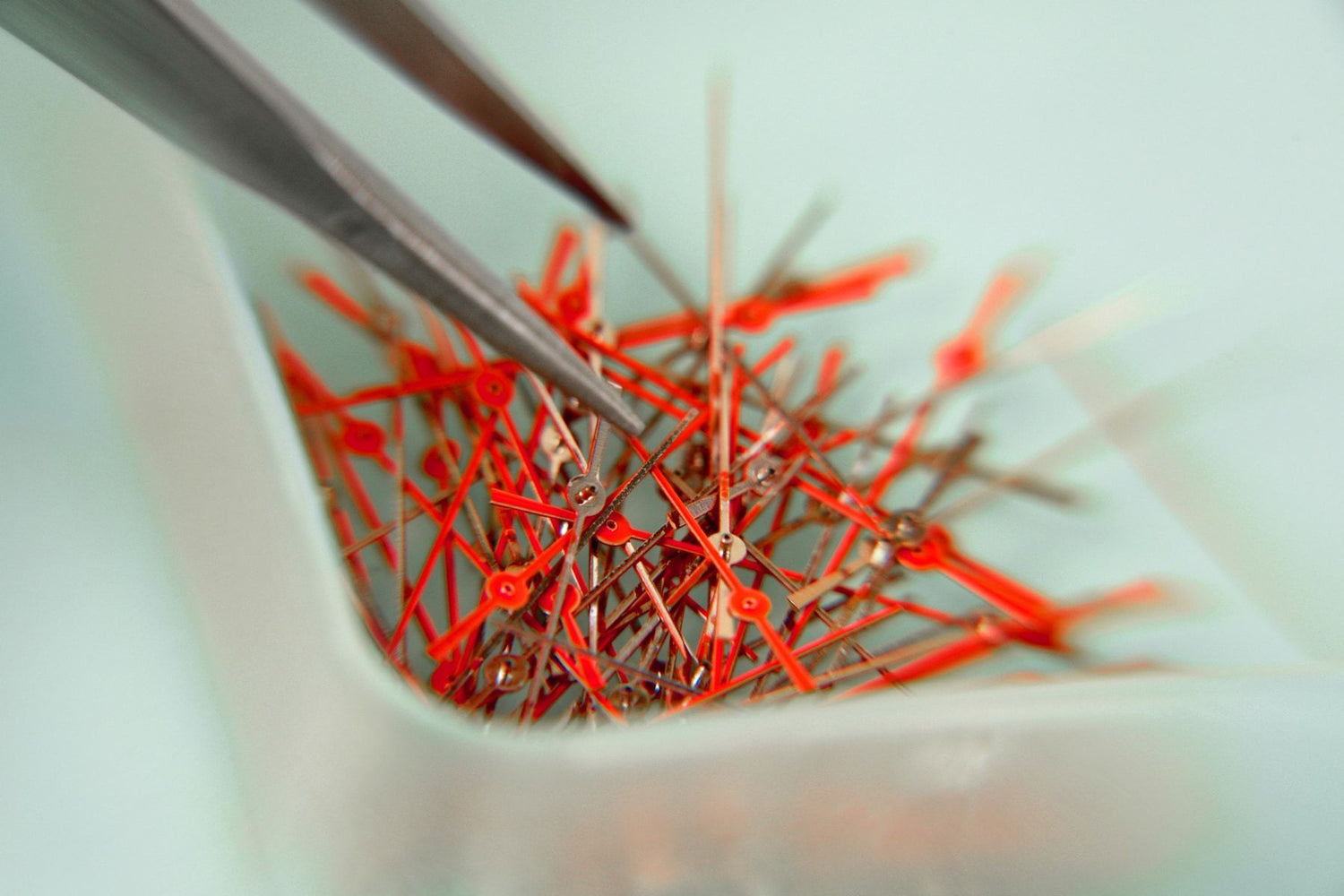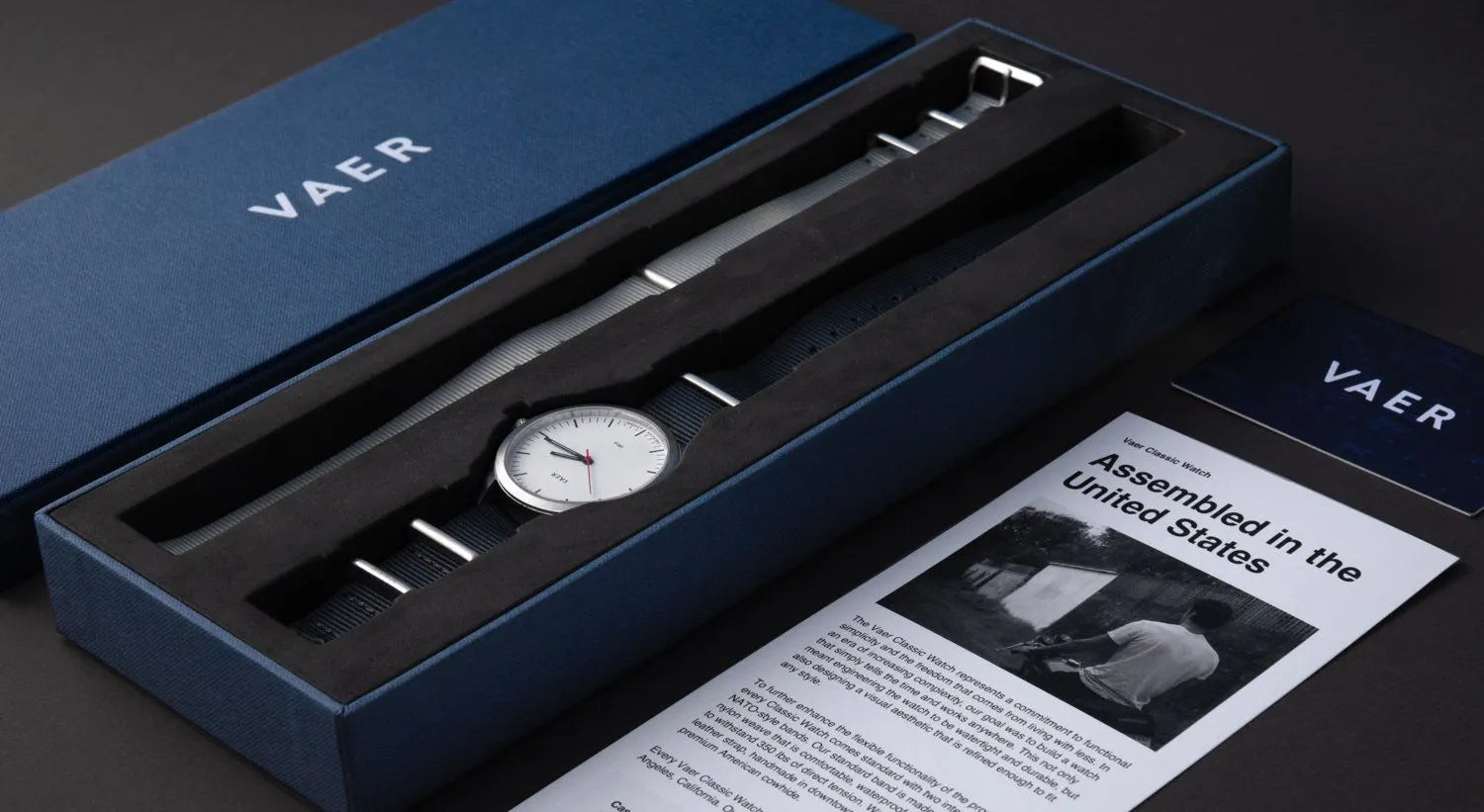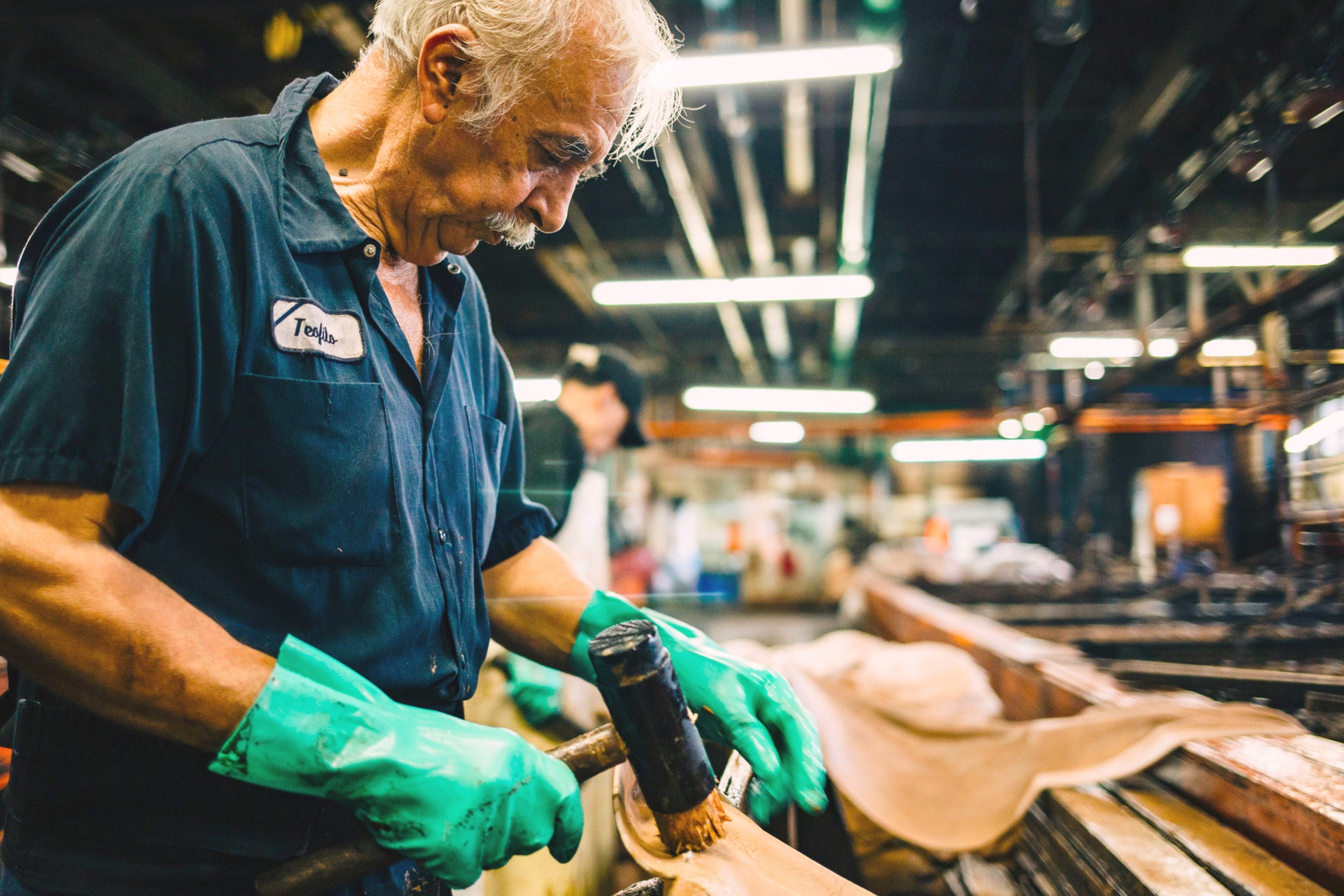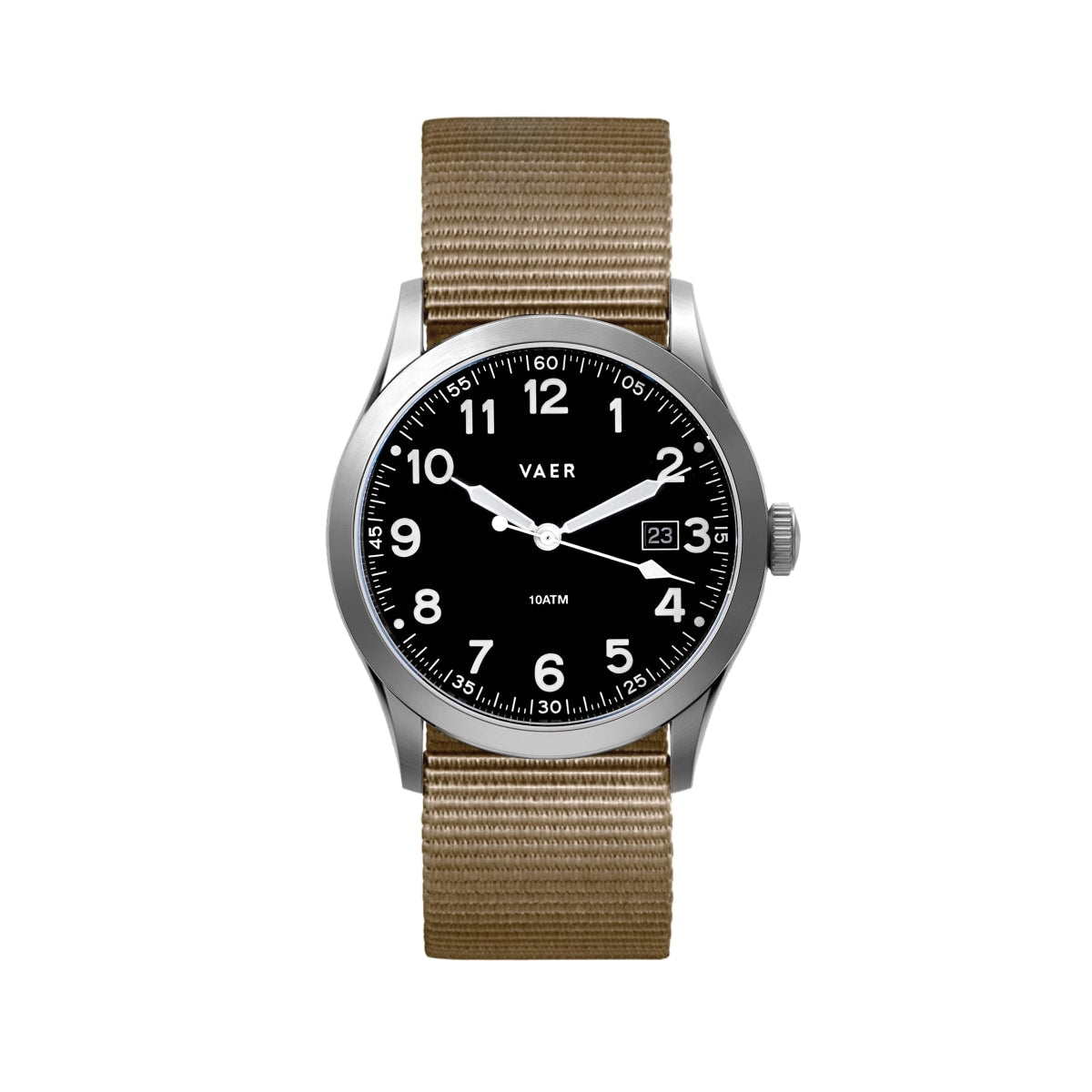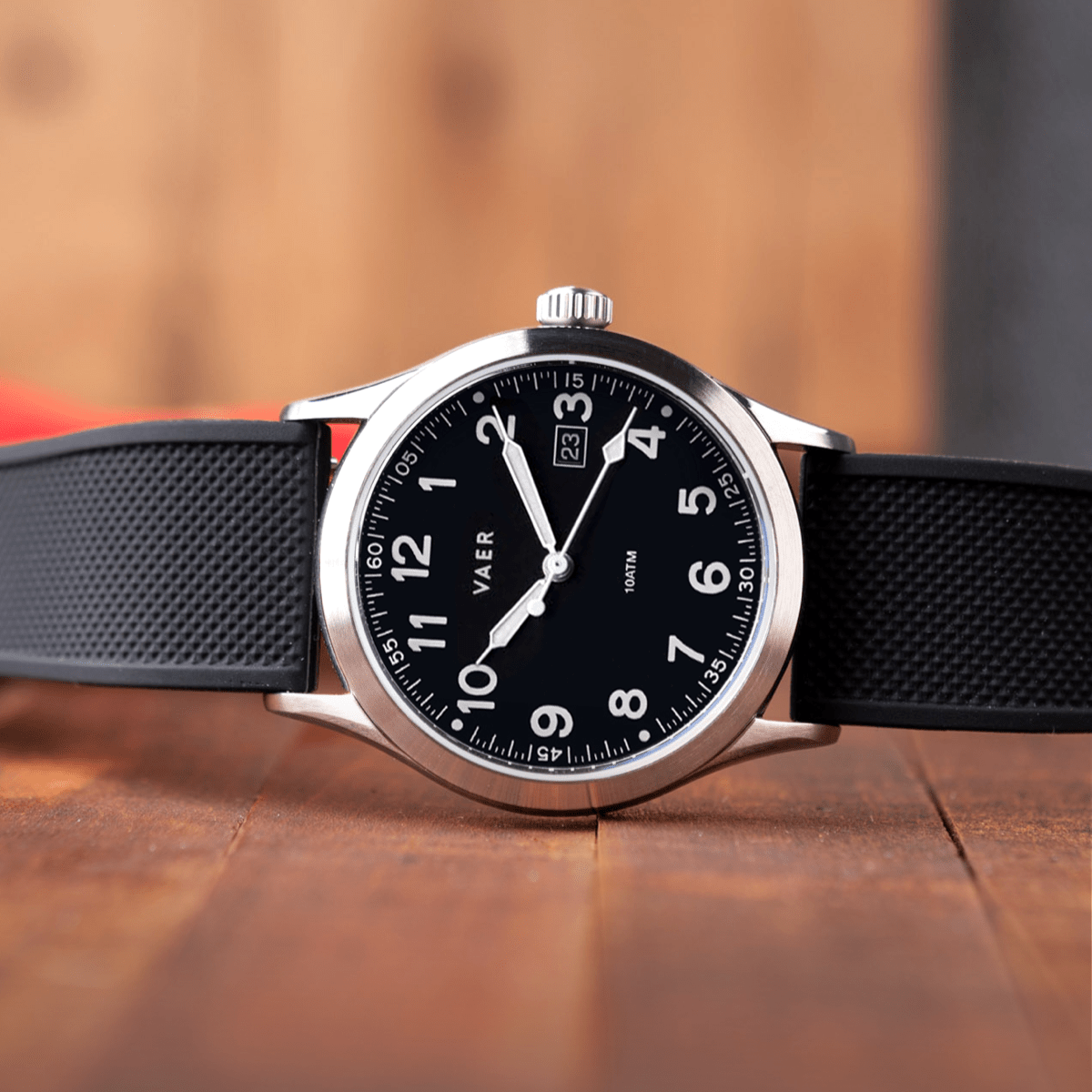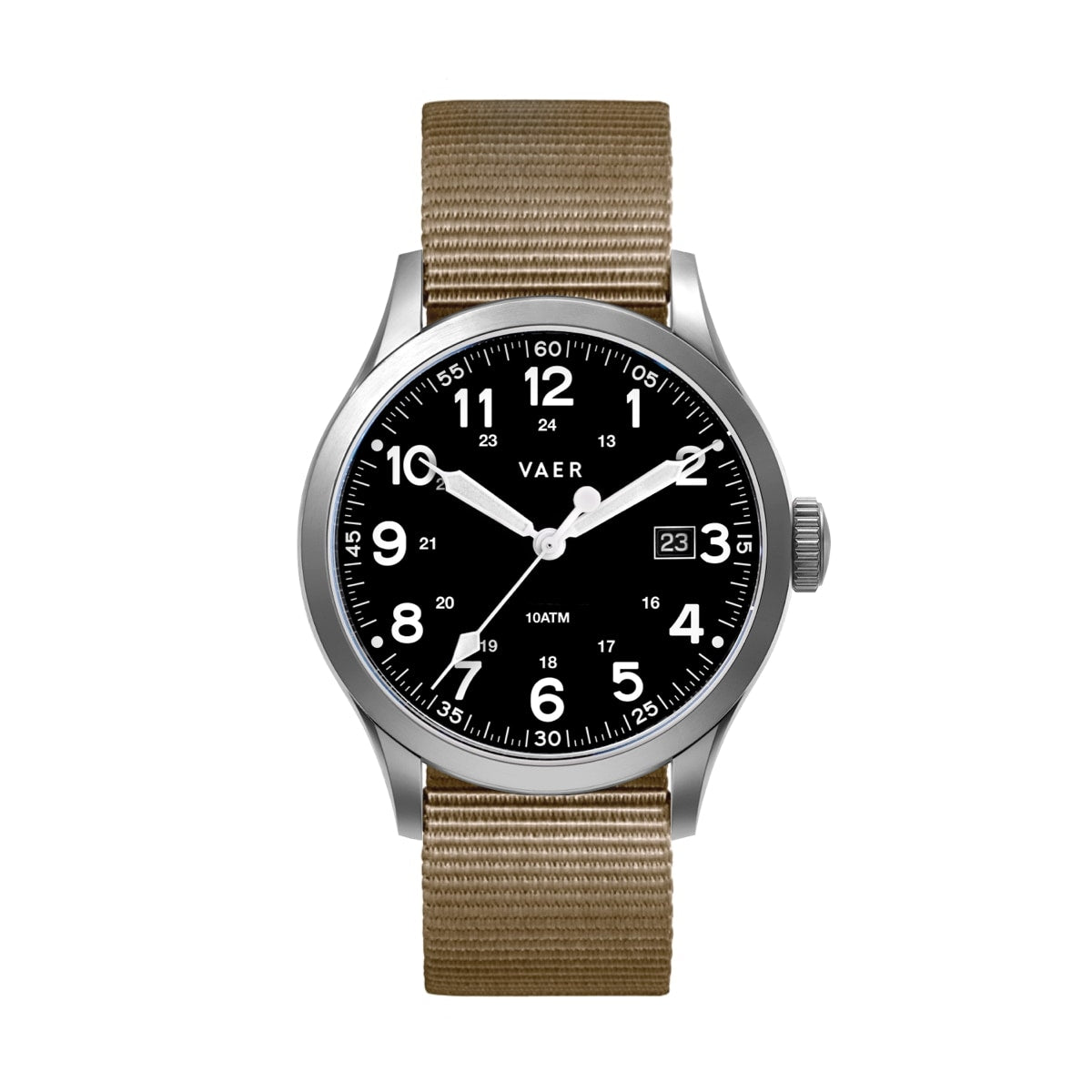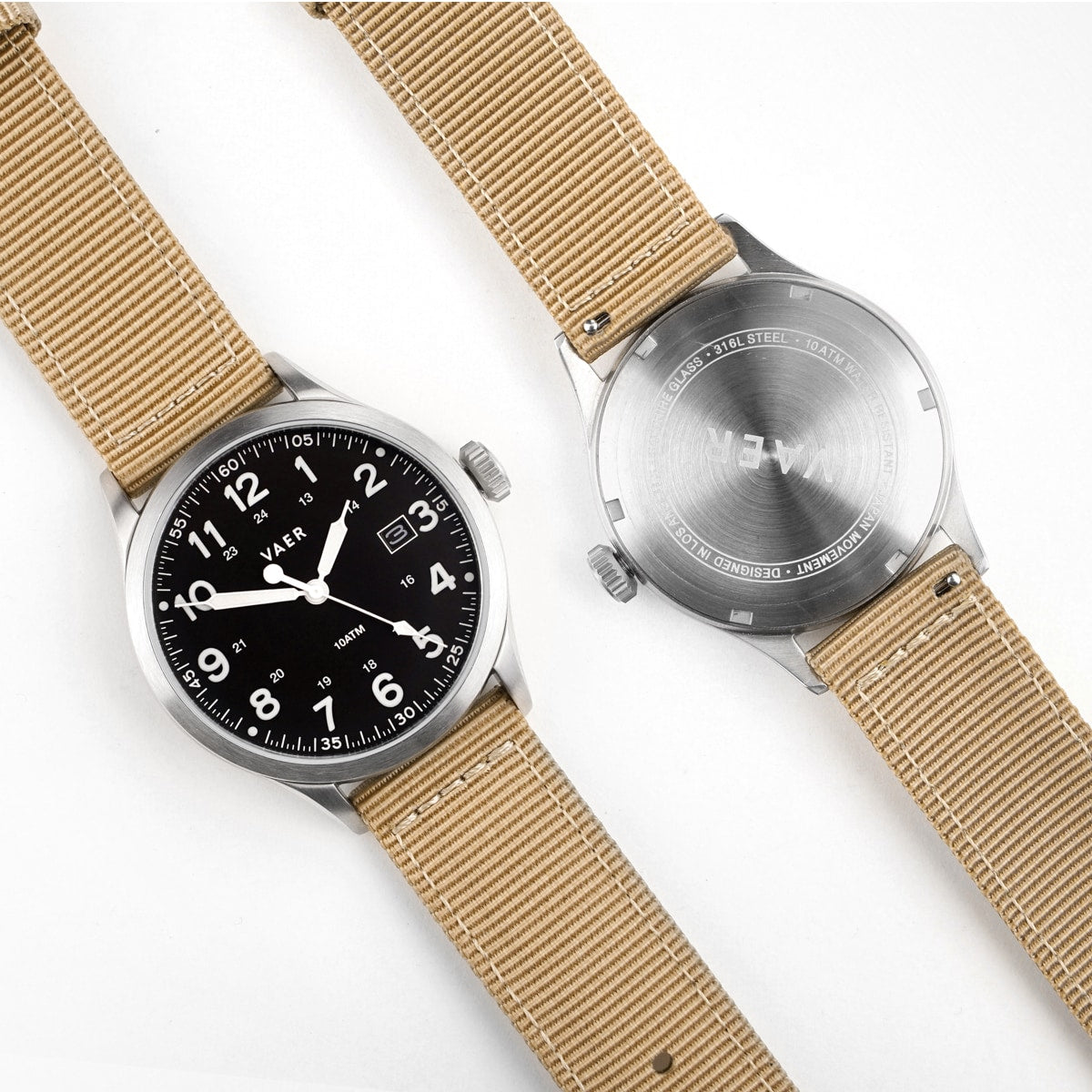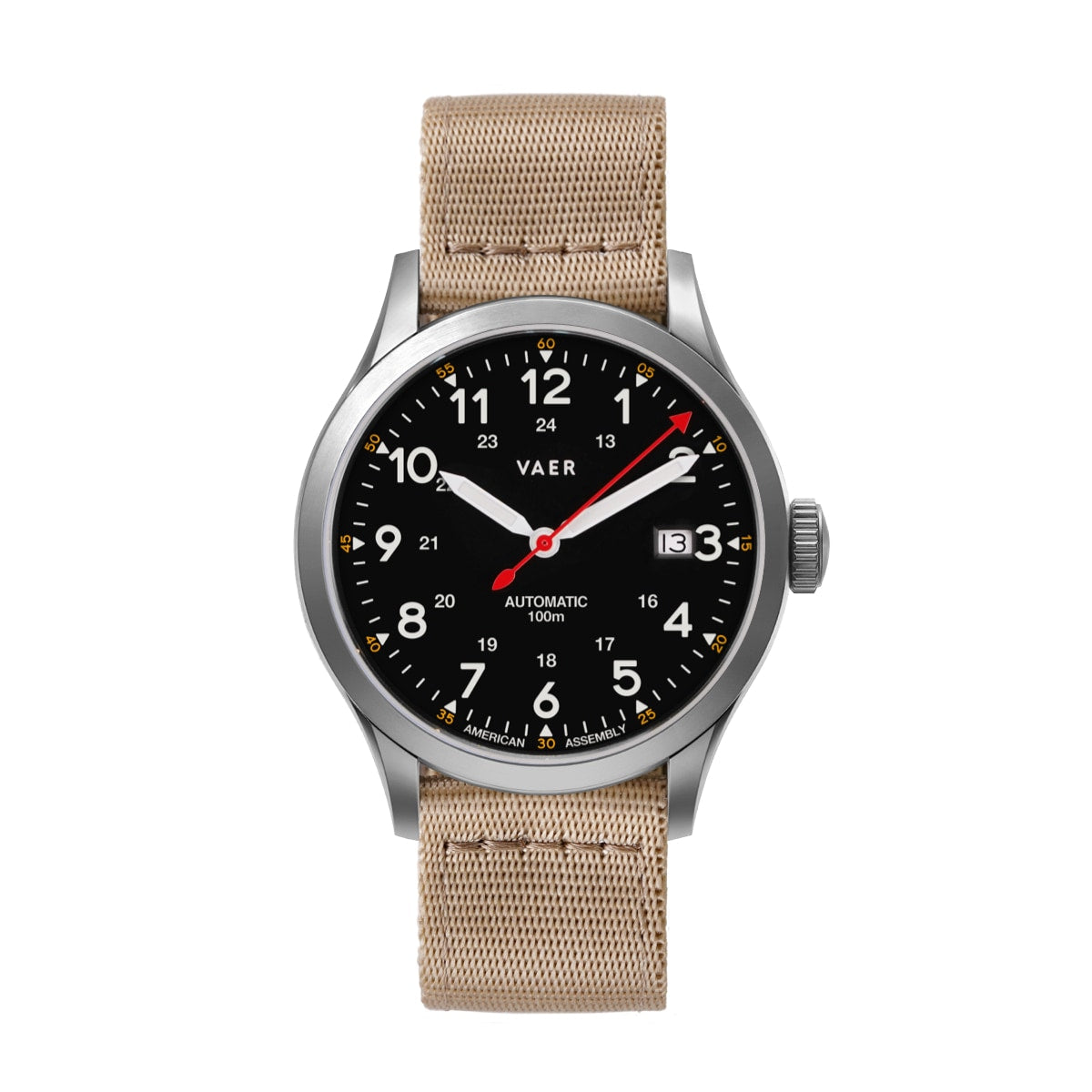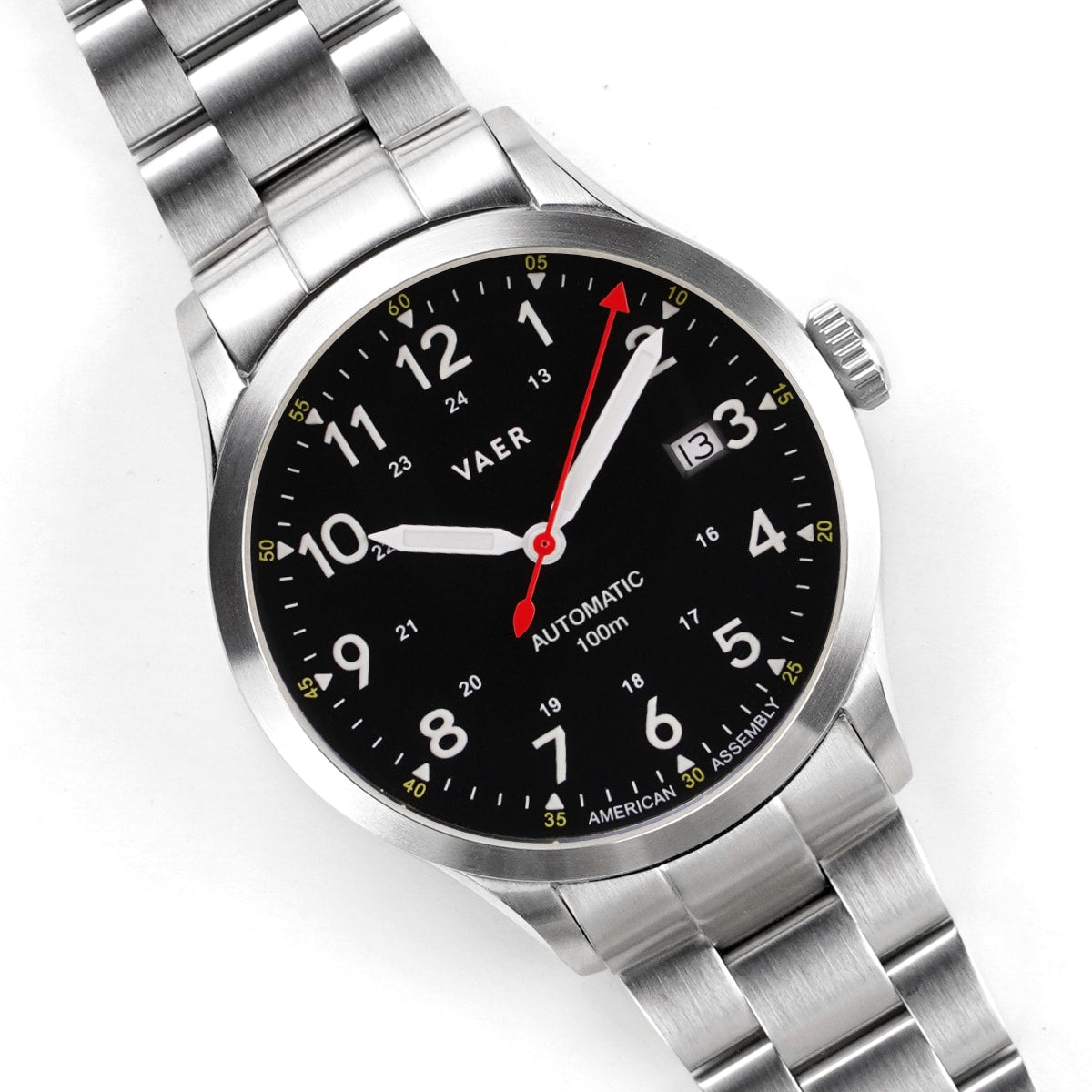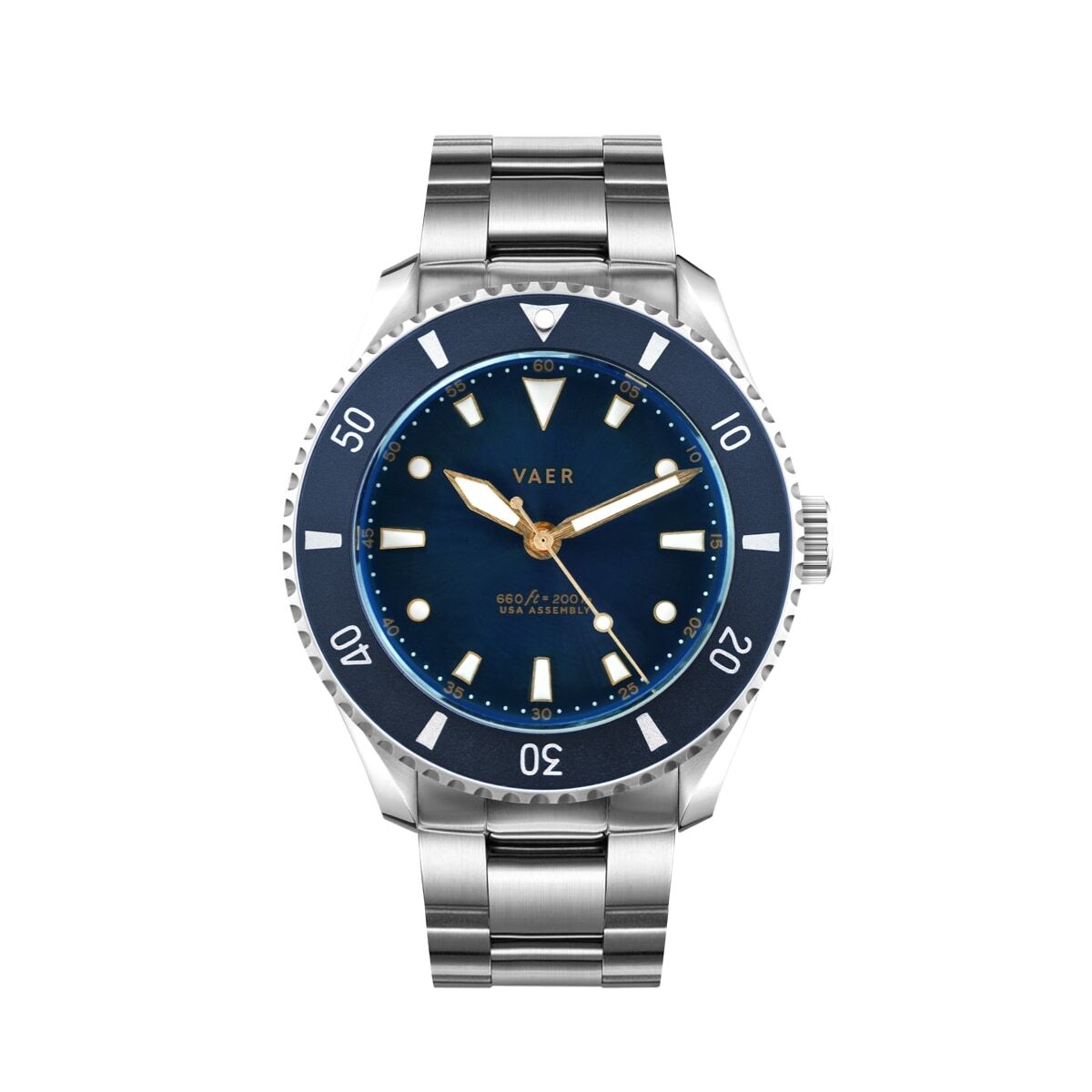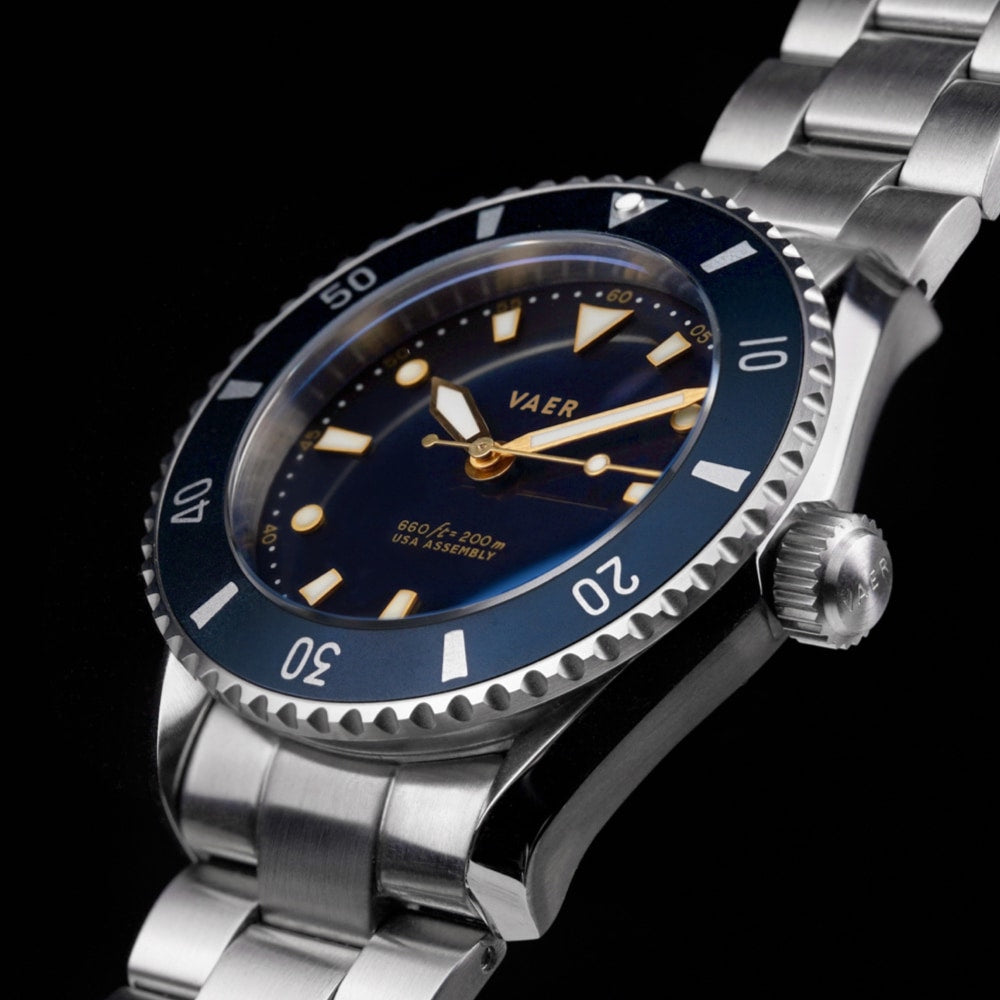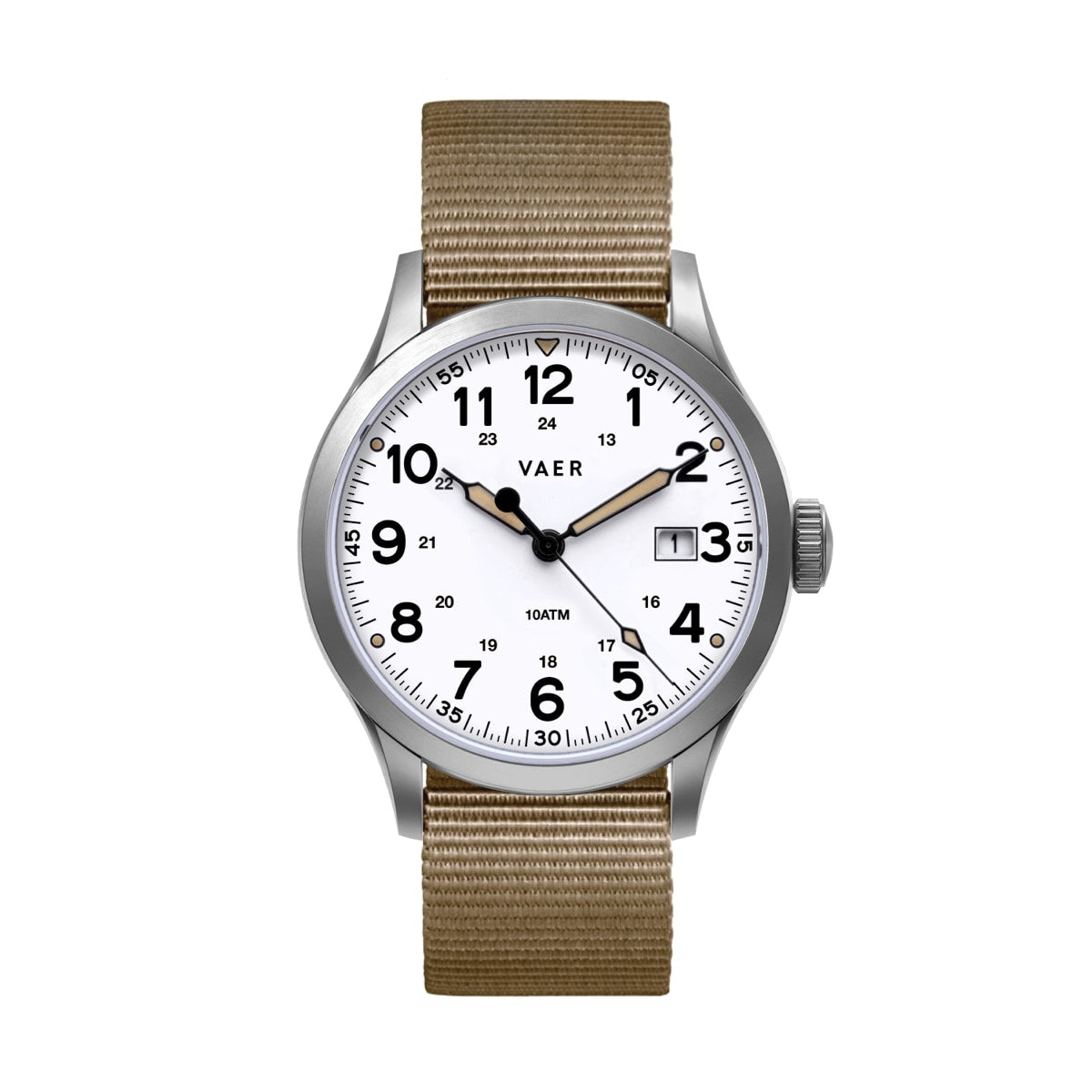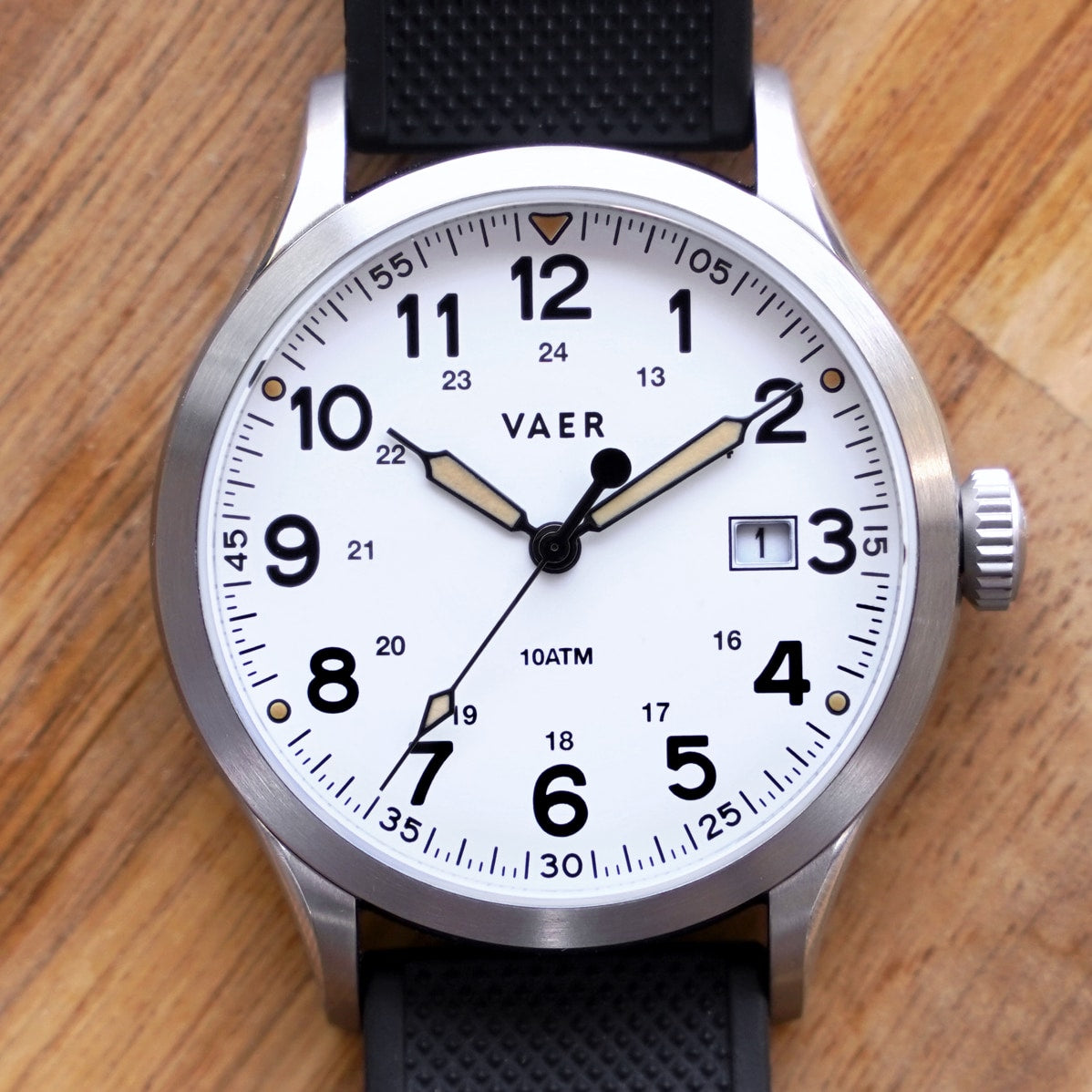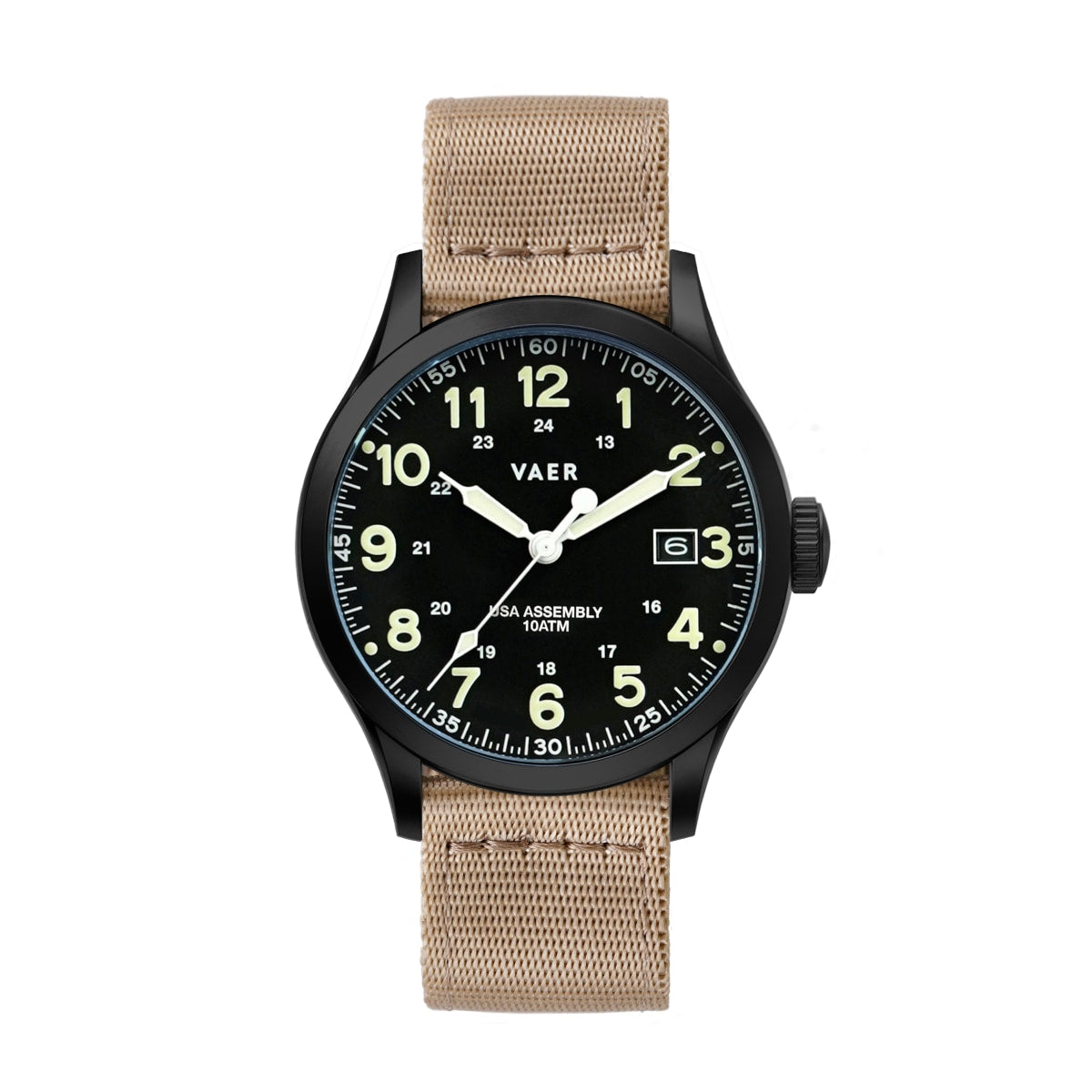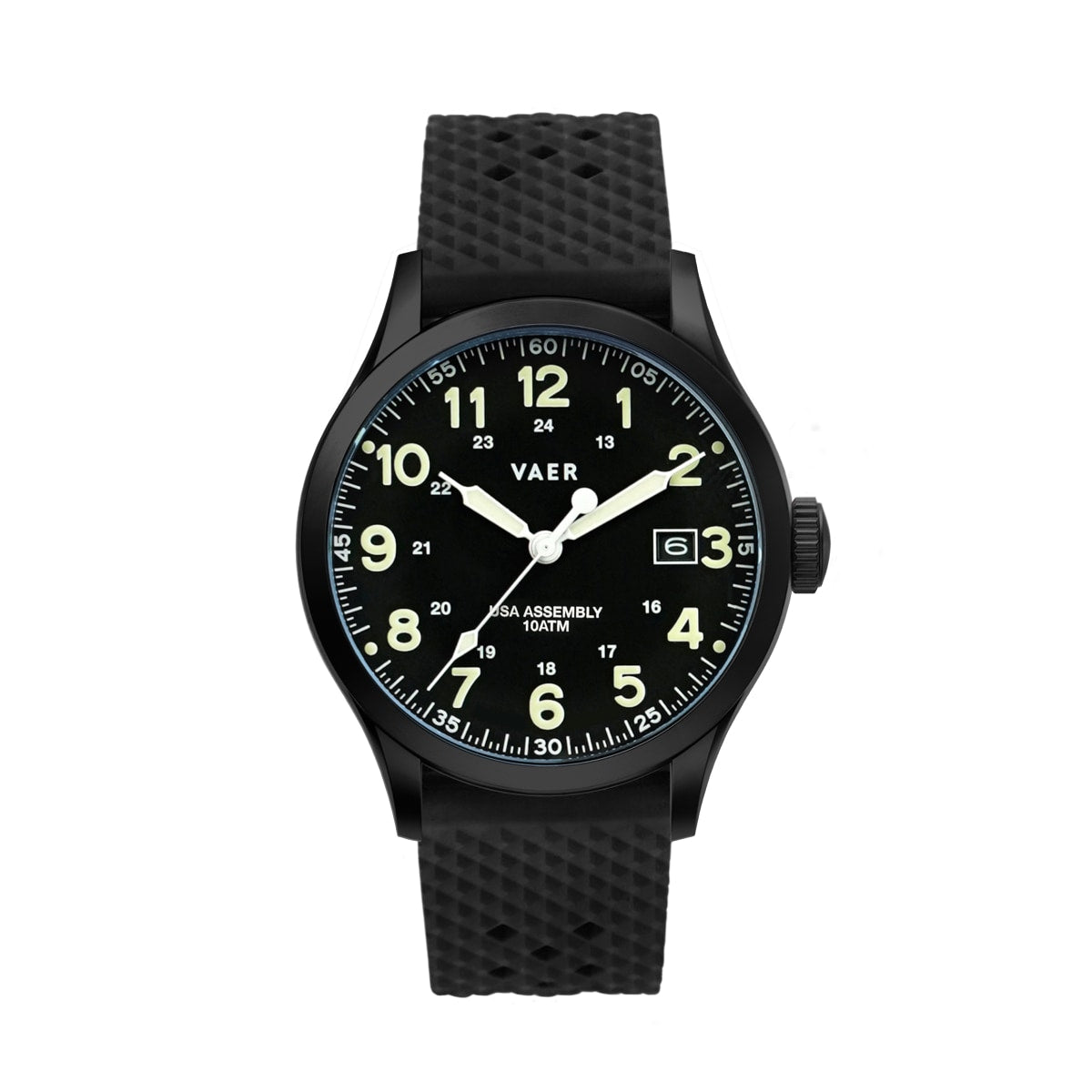If you've purchased a quartz watch and discover that the second hand is not perfectly aligned with the dial markers, don't freak out.
Detail is a common sign of quality in watchmaking. However, when it comes to second hand alignment in quartz watches (whether the watch is made by Vaer, Citizen, Seiko, or Swatch) it is a feature that is impossible to control without complete machine assembly.
How Are Watch Hands Placed on a Dial?
When a human technician assembles a quartz watch by hand, they use fine-point tweezers to mount the hour, minute and second hands on the small movement pinion protruding through the dial at the center of the watch. While the looped-end of the hour and minute hands are easily stacked on top of the pinion, positioning the second hand is more challenging. It is secured by pressing a hollow stem on the underside of the second hand into a ball joint at center of the pinion, locking the three hands in-place.
Even with the greatest attention to detail, and even if the second hand appears to align with the marker when it is placed, it is impossible to ensure the second hand will perfectly line up with all 60 of the second dial markings. A misalignment of even a few dozen micrometers (1/1000th of a millimeter) can compound on each tick of the second hand so that a watch can appear to hit the marks on one side of the dial and seem slightly off on the other side.


- Reagan Cook, Vaer Co-Founder
If My Second Misses the Markers Will it Keep Time?
It's important to keep in mind that this misalignment is purely cosmetic. It has no impact on the time-telling capacity of the watch. An expensive mechanical watch may boast a beautiful sweeping second hand (an illusion created by the hand moving 6-10 times per SECOND) but this cosmetic appeal is balanced out by the reality that mechanical watches are constantly losing time (about 10 seconds per day).
Conversely, once the hands on a quartz watch are set, electric vibrations will keep the movement oscillating in a consistent 60-tick pattern that will typically lose less than 5 seconds per month.

Installing the watch hands is one of the most detailed-oriented aspects of quartz watch assembly, but is one of dozens of steps required to build a fully functioning watch.
Is Second Hand Alignment an Indicator of Quality?
The strange reality of the modern watch industry is that perfect second hand alignment in a quartz watch, rather than being an indication of thoughtful craftsmanship is actually a strong indicator of mass-produced machine assembly.
Over the past decade, large watch conglomerates such as Casio and Swatch Group have invested heavily in robotic automation of their assembly lines that, in addition to controlling costs in the production, have largely resolved issues related to second hand alignment.
"The automation of all processes from assembly of the modules inside the watches to the assembly of the watches themselves, will allow an approximate three-fold increase in production efficiency. As a result, the new line will reduce production costs by more than 50%, bringing them into line with costs at Chinese plants. Production capacity in one eight-hour day of operations is estimated at 100,000 watches, which is the previous monthly production capacity. Operating hours can be increased due to automation, so the new line can also accommodate increased production in the future to meet demand."
Swiss and Japanese watch conglomerates like Swatch, Casio and Seiko have begun removing humans from the assembly process of both quartz and mechanical watches.
Perfect Alignment Requires Robot Assembly Lines
In addition to reducing human error and increasing operating efficiency, robotic watch assembly can also help from a marketing perspective. While human assembly in Japan is prohibitively expensive, a robot doesn't demand a minimum wage. By shifting away from the reliance on human assembly teams in China and Thailand (their robotic assembly lines are located in Yamagata) Casio can proudly and honestly label their watches as Made in Japan.Swatch Group has taken a similar approach; locating all of their automated assembly plants inside Swiss borders, and thus benefitting from the label of "Swiss Made", while conveniently not having to pay anyone Swiss to make it.For watch lovers, the rising popularity of full machine assembly presents an interesting opportunity to assess their motivations for buying a wristwatch. In the same way that the Quartz Crisis of the 1970s and 1980s challenged the purpose of the mechanical clockwork movement, and smartwatches have challenged the role of analog timekeeping, this new technological advancement requires buyers to assess the importance (if any) of human craftsmanship in the watchmaking process.


By assembling our watches in America, we've gained deep knowledge on the most detailed aspects of watches such as optimal pinion measurements and torque optimization.
While mechanical timepieces remain the category of choice for enthusiasts of human watchmaking (please note: Swatch Group also makes machine assembled automatics) the practicality, affordability, and accuracy of quartz watches have led to a growing supply of carefully crafted battery-powered timepieces.Whether you prefer a $600 Junghans Max Bill quartz, which, because it's assembled by hand in Germany may have a slightly misaligned second hand, or a $30 Casio, which, because it's assembled by a robot in Japan will have a second hand that hits the marks perfectly, is really just matter of personal preference. Both will accurately tell the time and last for years with proper care.
Want an Affordable Wristwatch Assembled in USA?
It's not an easy thing to find.
While there are dozens of American microbrands doing American assembly for automatic watches, Vaer is just about the only company also selling USA assembled quartz watches for under $200.
That status didn't come easily, in fact moving our watch assembly from Hong Kong to USA was the most complex and costly business decision we've made at Vaer in our short business history.
Like 99% of other watch startups, our first batch of 1000 watches were made in China. The reason we decided to change was not because of quality, function, or issues with second-hand alignment (Chinese factories assemble hundreds of millions of watches per year and they know how to do it quickly and efficiently). We decided to move to complete American assembly (increasingly assembly costs by 1640%) because we firmly believe that the greatest opportunities for growth as a watch company is in the promotion and maintenance of human skill and craftsmanship.

The Vaer Field Watch in Hunter Green was limited edition release from 2018. It's not currently available for sale, but it's a color way that we'd love to bring back at some point.
Since 2017, every second hand, on every C5, C3 and A5 Vaer watch has been carefully positioned and placed on the pinion by an American technician. Our techs earn between $35 and $50 per hour based on their experience and qualification (we'd actually save money by assembling our watches in Switzerland as there is a greater supply of talent). In addition to testing the water-resistance, and screw-down crown mechanism on every one of our watches, our techs do a visual QA on the second hands on all watches to ensure they are perfectly aligned or very close to hitting the marks.
Assembling Watches the Old Fashioned Way
While perfection in watchmaking has long been an aspirational goal, when it comes to second hand alignment in quartz watches, the achievement of absolute precision requires the removal of any human involvement in the assembly process. Whether this is a fair trade-off, largely depends on your attitudes toward the wristwatch as an object, and your interest in supporting human craftsmanship over automated machine-production.
It's a lot to consider, but if you remember the following, you should be pretty good to go when it comes to quartz hand alignment:
- The second hand missing markers is common.
- It's not a sign of quality or accuracy, rather hand assembly.
- Robot assembly is the only method of perfect alignment.
- For this reason, cheap watches often have good alignment.
- For a smoother hand sweep, consider buying an automatic.
We hope you enjoyed reading the article, and learned a thing or two about the odd realities of second hand alignment in quartz watches. For more details on our company or watches you can visit the shop, or keep reading by clicking one of the article links below.
Ryan and Reagan co-founded Vaer Watches in Venice, California in 2016. As small business owners they handle just about every aspect of the daily operations of the company from watch design and supply chain management, to customer support and photography. Over the years, they've learned a thing or two about watchmaking, online retail, and American sourcing and assembly. If you have a question, comment or correction related to this article you can contact the authors directly at team@vaerdesign.com.


